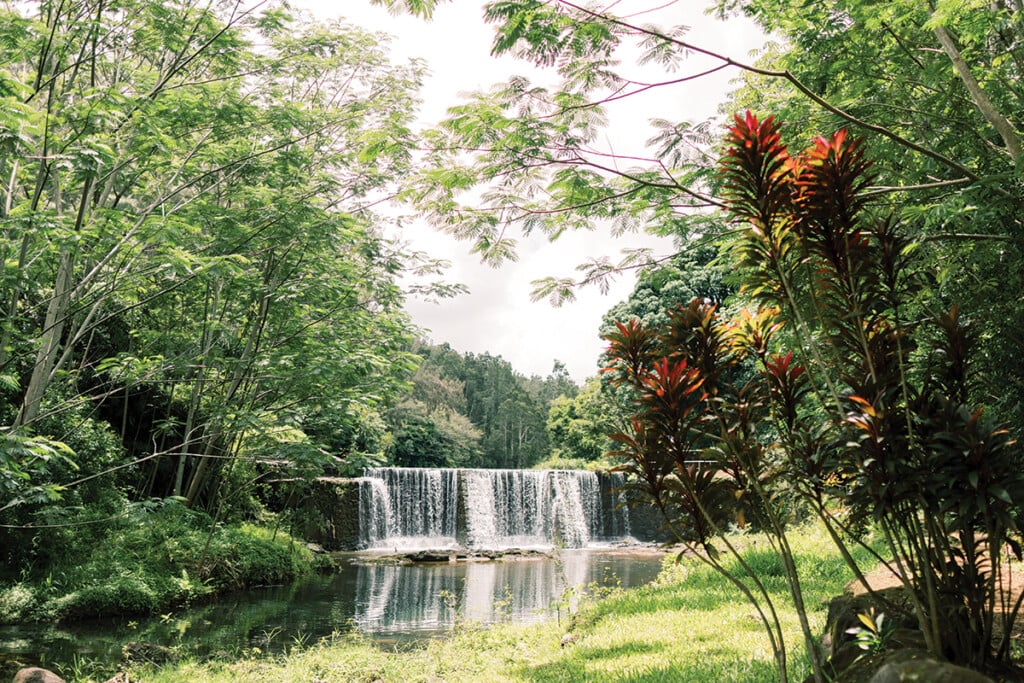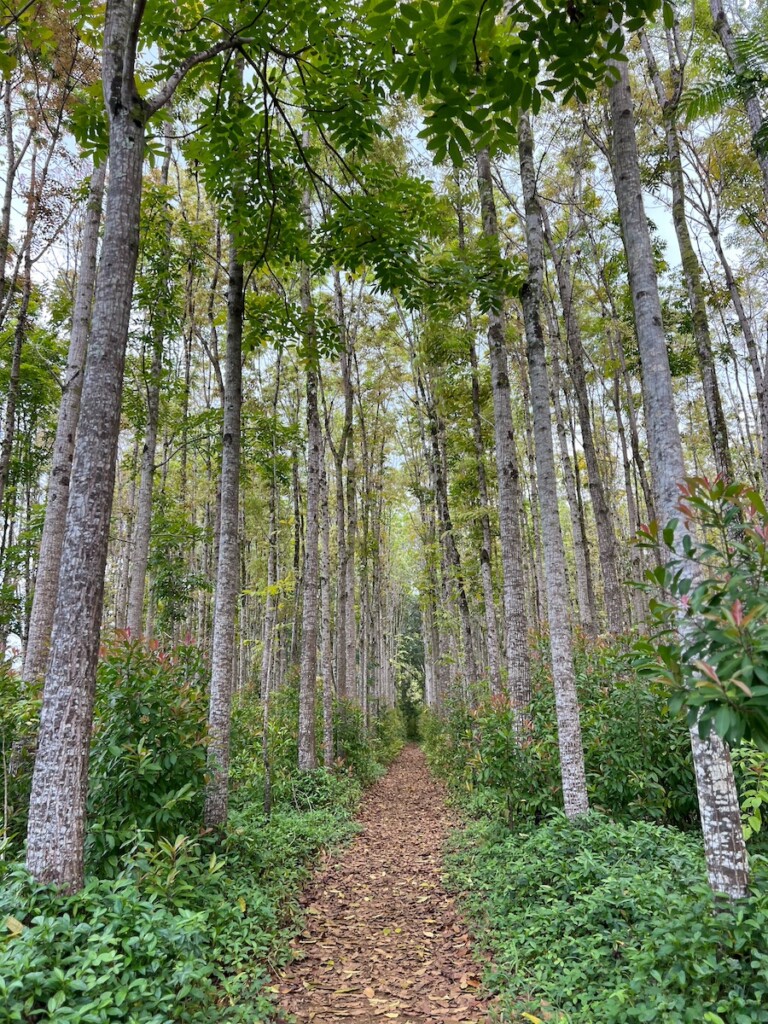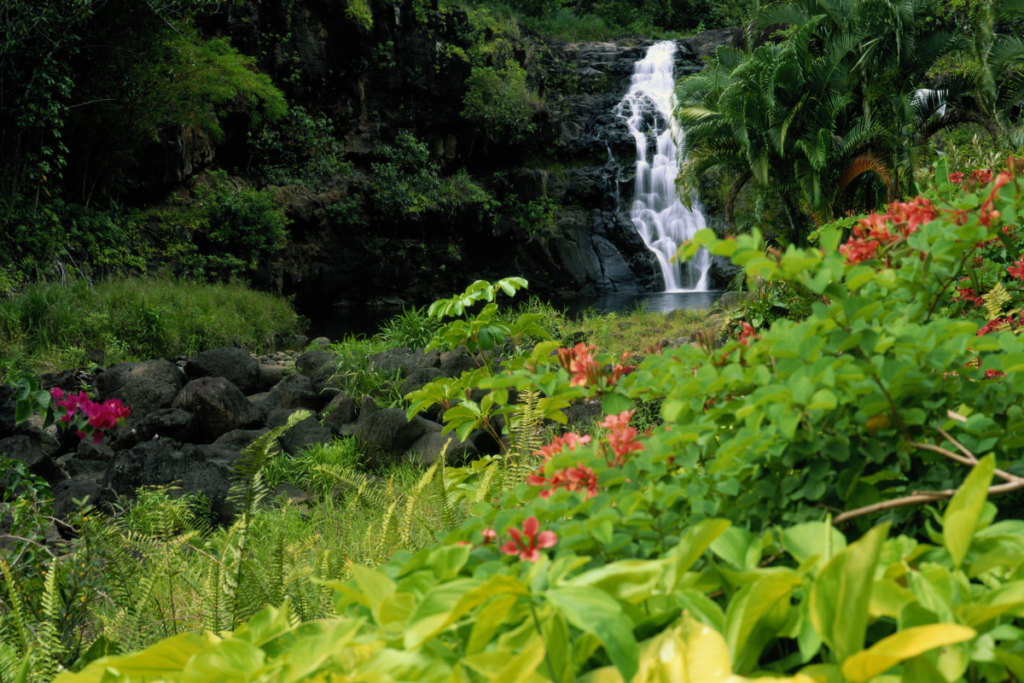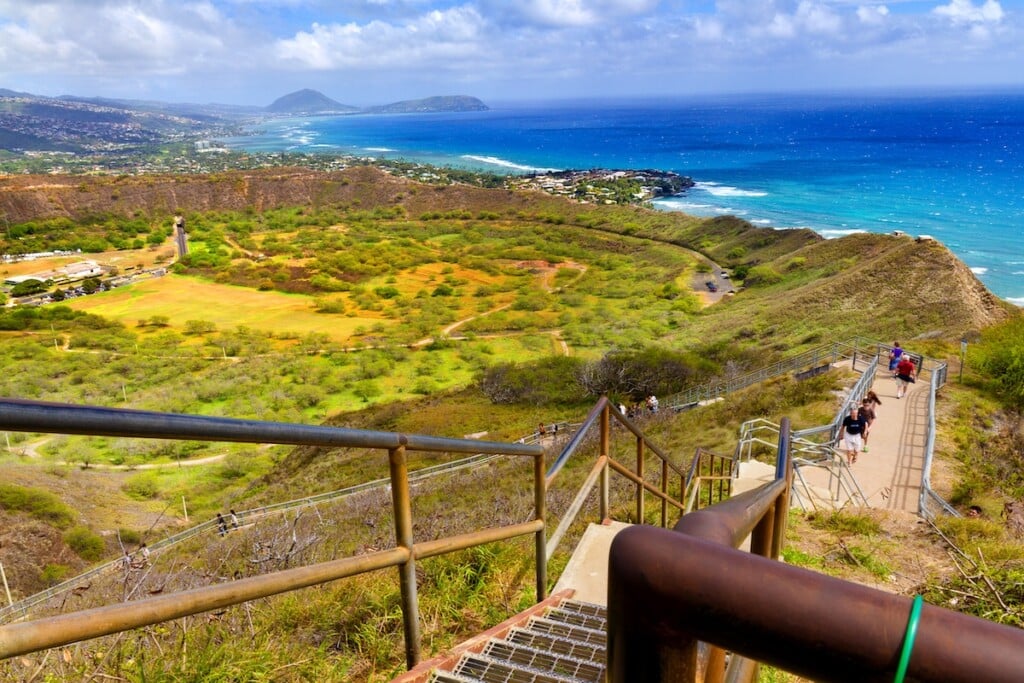This Hike on Kauaʻi is a Walk Through an Enchanted Forest
The picturesque Wai Koa Loop Trail tells the story of the island’s agricultural history.

It’s not every day you walk through a forest of Honduras mahogany trees in Hawai‘i—or anywhere, really. And yet, here we are, standing among more than 85,000 of these trees, planted in perfect rows on the Wai Koa Plantation, a 500-acre working farm on the north shore of Kaua‘i.
Wai Koa is the largest mahogany plantation in the U.S. and among the largest in the world. The big-leaf tree, Swietenia macrophylla, is endangered in its native habitats of Central and South America. It’s valued for its reddish-brown hardwood that’s most often used to make furniture, cabinets and musical instruments.
On the Wai Koa Loop Trail, you can walk through these trees in what’s often referred to as an enchanted forest.
The 4-mile trail is no longer a loop, as part of the trail was damaged in a storm, but it remains open to the public.

The Wai Koa Loop Trail meanders through groves of trees, including Honduras mahogany.
Photo: Mami Wyckoff
The Wai Koa Loop Trail meanders through groves of trees, including Honduras mahagony. Photo: Mami Wyckoff
I’ve walked the trail a few other times, but today I’m on a guided hike, a first for me. The luxe 1 Hotel Hanalei Bay, which opened in February 2023 on the cliffs above the bay, offers a variety of experiences for its guests, including this hike led by a local expert.
Our guide is Troy from Illinois, a laid-back 28-year-old who works as a landscaper and gardener in nearby Kīlauea. His family owns property on Kaua‘i and he spent a lot of time here as a kid before trading in the biting cold of Decatur for the lush greenery of the Garden Isle. I’m last to arrive at the hotel’s porte-cochère, where Troy, along with newlyweds from Dallas, are waiting.
It’s a quick drive—not even 15 minutes—to the start of the trail mauka of Kalihiwai. We pull into the parking lot of the North Shore Dog Park, also on the private Wai Koa Plantation, which has been owned by Bill and Joan Porter since 2004. The couple kept access to the trail, which ends at a historic stone dam, open to the public.
The trail—and dog park—are part of the bustling Anaina Hou Community Park, a nonprofit-run 30-acre campus with a pavilion that hosts cultural events and concerts, an 18-hole mini-golf course set in a botanical garden, a weekly farmers market and a 17,000-square-foot playground constructed from 707,544 plastic milk jugs.
Troy explains the history of the area, from its location downslope from Mount Wai‘ale‘ale, one of the wettest spots on Earth, to the agricultural evolution of this land from sugar to guava to mahogany. He tells the story of the nēnē (Hawaiian goose), once endangered and now considered a conservation success story. And he points out a patch of hilahila, or sleeping grass, along the start of the trail. He encourages the couple from Dallas to touch the leaves, which immediately shrink down, as if hiding or “sleeping.”
“Hilahila means shy in Hawaiian,” he explains. “Makes sense, right?”
We arrive at around 10 a.m.—later than I would have liked—and the cloudy skies mean it will either be a cool, comfortable hike or it’s going to rain soon. (Both turned out to be true.)
Wai Koa is more stroll than hike, though I’m glad to be wearing my well-worn hiking shoes, as parts of the trail are muddy from rain a few days earlier. We walk past Norfolk Island pine trees planted in the early 1950s; they were meant to be harvested as Christmas trees but not all of them were cut down, and the ones left make up what became known locally as Kīlauea Woods.

The trail leads through a mahogany forest.
Photo: Catherine Toth Fox
We make our way to the mahogany forest, stopping to snap photos and marvel at the perfect rows of trees. To me, this is the highlight of the hike. But to many others, it’s what comes a little later.
We exit the mahogany forest and walk alongside an open pasture with views of the Makaleha and Namahana mountains. The former, which loosely translates to “to wonder in admiration,” reaches 3,215 feet at its highest point. Namahana, which means “twin branches,” is about 2,600 feet tall and nestled between the Kalihiwai and Kahiliholo streams that feed into Kīlauea River.
And then we reach it. The Kīlauea Stone Dam. Some call it the crown jewel of the Wai Koa Loop Trail.

The Kīlauea Stone Dam was built in 1881.
Photo: Mami Wyckoff
The historic dam was completed in 1881, during the height of the sugar plantation era on Kaua‘i. Sugar played a central role in the development of Kīlauea, and for nearly 100 years, Kīlauea Sugar farmed these lands. The dam was constructed to provide consistent water access to the plantation.
Today, the meticulously landscaped area is a lush and peaceful place to stop and sit, maybe enjoy a picnic lunch (if you’re smart enough to plan ahead). We walk along the path that leads to the dam, water rushing over one side, the other side calm and tranquil.
We keep walking, up a small hill through a bamboo grove. A statue of Buddha sits here, its moss-covered legs crossed, eyes closed. Troy says someone once told him this is a European Buddha—you can tell by the shape of its nose. I can’t disagree.

A statue of Buddha sits among bamboo trees.
Photo: Mami Wyckoff
Our guide shows us a fern—called hō‘i‘o, or pohole on Maui—and talks about how locals eat it. He then points to a nearby grove of strawberry guava trees, called waiawī. He picks a red berry and hands it to the couple, encouraging them to take a bite.
Clearly, we’re hungry. On the walk back we talk about where to get fresh poke nearby; about Hawai‘i’s great Filipino cuisine; and why the Dallas pair should try kūlolo, a dessert made from taro, coconut and sugar. We decide to grab lunch at Nourish Hanalei, a farm started by three sisters on Kaua‘i with a stand that serves açaí bowls, locally made organic bagels, seasonal lemonades and filling bowls of local veggies and rice.
We sit at a picnic table, waving off feral chickens and gawking at the panoramic view of Hanalei.
The couple, who a few days earlier had gotten married at a luxe resort on Maui, surrounded by family and friends, smile at each other.
“This is the best part so far,” the wife says.
“Yes,” agrees her husband. “We needed this.”
The trailhead is located at Anaina Hou Community Park, off of Kūhiō Highway. The trail is open to the public daily from dawn to dusk.
This story was originally published in our Summer 2024 issue, which you can buy here. Better yet, subscribe and get HAWAIʻI Magazine delivered to right to your mailbox.




